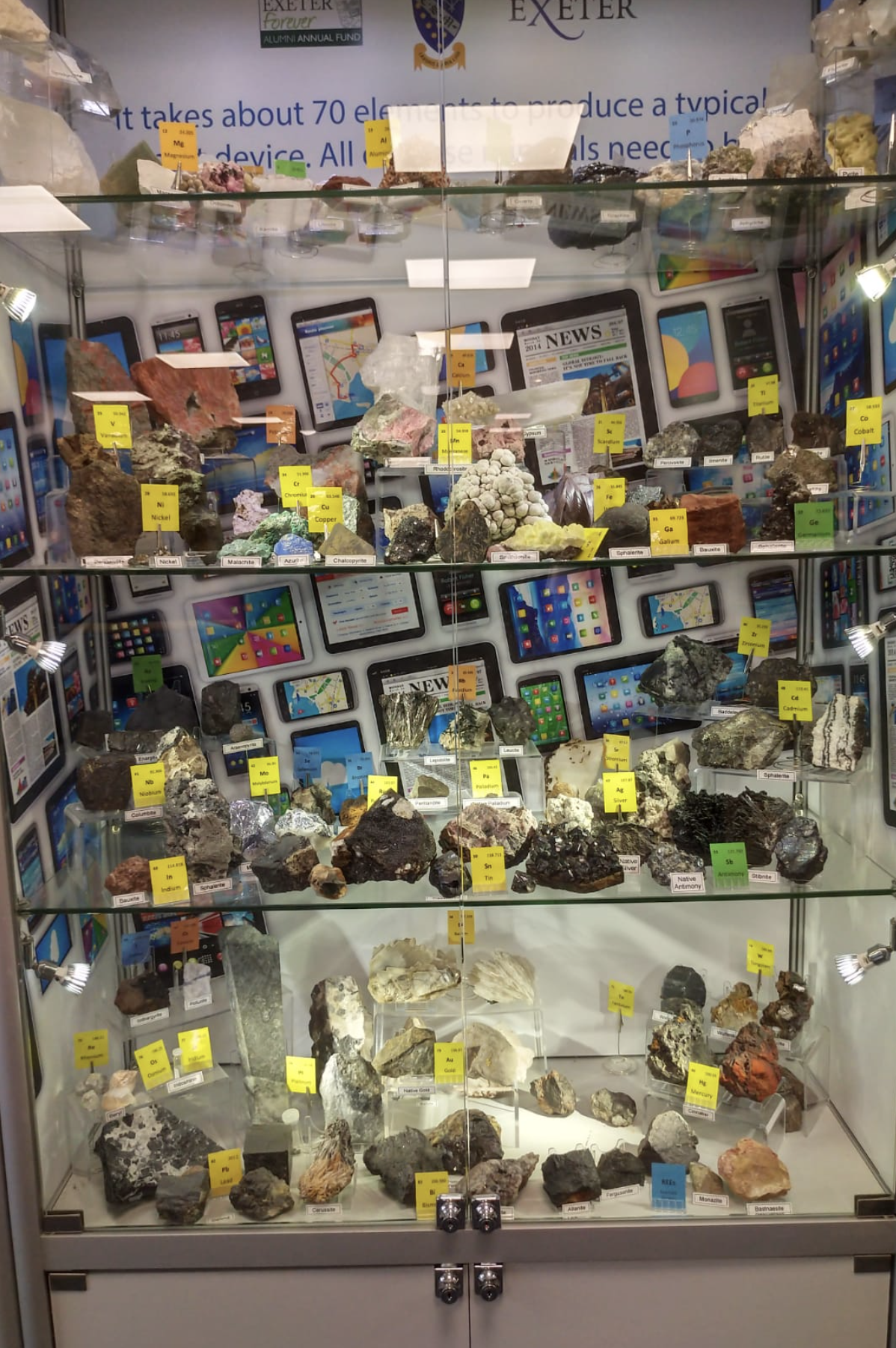This contrarian indicator suggests we’re at the bottom of the mining cycle
Mining might be a boring industry, but investors shouldn’t ignore it, says Dominic Frisby.


I went to a mining conference on Monday - the Mining Journal Select London - to get the latest view on mining stocks and the industry in general. In particular, as well as being on a panel, I wanted to catch up with the management of a couple of companies I hold shares in and get a feel for the state of the industry.
Mining is cyclical. If there’s a shortage of some metal or natural resource, the price of that resource will go up. Rising prices encourage people to start looking for more said resource, investing in it and mining it. Suddenly there’s a mining boom.
This eventually leads to an increased quantity of whatever the resource in question is, and the price comes back down again. The price of mining companies comes back too. Investment goes away. Suddenly we have a mining bust.
MoneyWeek
Subscribe to MoneyWeek today and get your first six magazine issues absolutely FREE

Sign up to Money Morning
Don't miss the latest investment and personal finances news, market analysis, plus money-saving tips with our free twice-daily newsletter
Don't miss the latest investment and personal finances news, market analysis, plus money-saving tips with our free twice-daily newsletter
In today’s fiat world of wild price swings, boom seems to turn to bust with increasing rapidity and violence. We are definitely not in the boom phase of the cycle.
“Look at the room,” an investor came up to me and said after the panel I was speaking on. “It’s empty. It’s a classic bottom-of-the-market sign.”
I can’t help thinking he may have a point. But I also want him to be right, as my own portfolio is so exposed to mining.
Mining stocks are boring, but we need the industry
In our 21st-century world of billionaires, leverage, booming tech stocks and cryptocurrencies doubling overnight, value is digital and digital is quickly scalable.
Ten grand can be enough to be trading portfolios in the hundreds of thousands. Write a bit of code, upload it to the app store and it can be downloaded billions of times. Upload a funny video, watch it go viral and find yourself with a million followers.
And then there is old analogue mining. Getting to some remote and unexplored part of the globe. Sampling a bit of rock. Getting a licence. Sticking a drill into the rock. Hopefully, finding something. Sticking a few more drill bits in. Hopefully finding something more. Getting what you have evaluated. Persuading investors that what you have is meaningful. Getting more permits. Drilling more, evaluating more, persuading investors more and on and on for 20 years until you eventually complete the mine construction and start producing.
It takes an average of 16 years to take a mine from discovery to production. 16 years before the company is profitable. Who’s got 16 years in today’s fast-paced world? 16 years is a lot of time for something to go wrong. There could be a change of government, a change of local attitude to mining, a change in underlying commodity price or a change in the investment landscape to name just a few of the risks.
Mining is slow. Mining has not seen the breathtaking improvements in technology that other industries have seen. Yes, there are massive trucks, and huge machines, but the basic principles, extract metal from rock, are not far off what they were in the Bronze Age.
And yet mining is essential. We could not enjoy the world we enjoy without mining. The picture below is of a cabinet at the Camborne school of mines that shows the 70 different elements we need to make a typical smartphone: copper, silver, gold, tin, indium, tantalum, silicon, not to mention the gadolinium, europium and dysprosium.

These elements cannot be digitally created. Midjourney serves no purpose here.
Should investors ignore mining stocks?
At present, retail investors shun mining. So do institutions. Who can blame them? The sector is down around a third or more on this time last year. The small-caps by much more.
It takes time, I was constantly told yesterday, but investors don’t like looking at stocks in their portfolio that are down 30 or 50% from where they were last year. They don’t have 16 years.
At the conference, there was some dissatisfaction that retail investors are no longer interested in mining, but can you blame them?
Culture is a factor too. Most mining investment comes from people within the industry who understand the sector. Here in the UK, mining is no longer part of our culture as it once was. People like to invest in things they understand.
Mining requires so much capital, it needs promoters. It needs the guy with the suspiciously white teeth telling you that this stock is going to the moon and that you are going to be a millionaire. Without the promotion, without the blue sky, it can’t raise the capital it needs. The problem is that a lot of promoters are scoundrels. Investors get ripped off. What did Mark Twain say about a mine being a hole in the ground with a liar standing next to it?
But even without the scoundrels, capital gets destroyed. Sometimes unscrupulous governments in far-flung parts of the world seize control of profitable mines. Sometimes unprincipled governments bow to environmental lobbies and remove their licences. Most of the time the regulator is Mother Nature. The mine is simply uneconomic. There is not enough metal in the ground to justify mining it at current prices. Metals prices need to be twice as high or more before this mine is viable.
Just one in a thousand exploration properties make it to production. Think of the capital destruction of those other 999 properties. Few prudent money managers invest with those odds.
Even the mine that makes it is, 90% of the time, comes in late and over-budget.
In this fast-paced modern world, no wonder the industry is on its knees.
High commodity prices will drive more spending
They say the cure for high prices is high prices. You could say the same about low prices. Mining needs higher metal prices
Having to tighten their belts, the conduct of those in the industry is much better than it used to be. Execs are staying at the Travelodge, not the Savoy. The numbers being presented are better. Companies are having to work harder, there is more competition for capital - this has all contributed to improvements in standards, as is often the way in bear markets.
I’m slightly obsessed at the moment with AI and the economic boom that is coming as a result of the improvements to productivity it is enabling. I was delighted to meet two different people who are looking at ways to empty AI in this most analogue of industries.
Anyone who has ever been to a core shack will tell you, there is a lot of data in mining. Miles upon miles of drill core stores in shacks, with the rock contents recorded and analysed.
Surely AI will have a role to play in analysing all that data, comparing it to the data of existing producing mines, as well as failed, non-producing discoveries?
One of the chaps I spoke to said he thought his AI might be able to get to a point where the success rate gets from one in a thousand to one in three.
Then again, he did have very shiny teeth.
We need mining. We will always need it. Our failure to invest in it is going to come back and bite us very hard.
Meanwhile, we soldier on and try to find the best projects, with the best management, with the highest probability of success.
We also need patience.
Get the latest financial news, insights and expert analysis from our award-winning MoneyWeek team, to help you understand what really matters when it comes to your finances.
Dominic Frisby (“mercurially witty” – the Spectator) is as far as we know the world’s only financial writer and comedian. He is the author of the popular newsletter the Flying Frisby and is MoneyWeek’s main commentator on gold, commodities, currencies and cryptocurrencies. He has also taken several of his shows to the Edinburgh Festival Fringe.
His books are Daylight Robbery - How Tax Changed our Past and Will Shape our Future; Bitcoin: the Future of Money? and Life After the State - Why We Don't Need Government.
Dominic was educated at St Paul's School, Manchester University and the Webber-Douglas Academy Of Dramatic Art.
You can follow him on X @dominicfrisby
-
 Investors will reap long-term rewards from UK equities
Investors will reap long-term rewards from UK equitiesOpinion Nick Train, portfolio manager, Finsbury Growth & Income Trust, highlights three UK equities where he’d put his money
-
 The graphene revolution is progressing slowly but surely
The graphene revolution is progressing slowly but surelyEnthusiasts thought the discovery that graphene, a form of carbon, could be extracted from graphite would change the world. They might've been early, not wrong.
-
 Halifax: House price slump continues as prices slide for the sixth consecutive month
Halifax: House price slump continues as prices slide for the sixth consecutive monthUK house prices fell again in September as buyers returned, but the slowdown was not as fast as anticipated, latest Halifax data shows. Where are house prices falling the most?
-
 Rents hit a record high - but is the opportunity for buy-to-let investors still strong?
Rents hit a record high - but is the opportunity for buy-to-let investors still strong?UK rent prices have hit a record high with the average hitting over £1,200 a month says Rightmove. Are there still opportunities in buy-to-let?
-
 Pension savers turn to gold investments
Pension savers turn to gold investmentsInvestors are racing to buy gold to protect their pensions from a stock market correction and high inflation, experts say
-
 Where to find the best returns from student accommodation
Where to find the best returns from student accommodationStudent accommodation can be a lucrative investment if you know where to look.
-
 The world’s best bargain stocks
The world’s best bargain stocksSearching for bargain stocks with Alec Cutler of the Orbis Global Balanced Fund, who tells Andrew Van Sickle which sectors are being overlooked.
-
 Revealed: the cheapest cities to own a home in Britain
Revealed: the cheapest cities to own a home in BritainNew research reveals the cheapest cities to own a home, taking account of mortgage payments, utility bills and council tax
-
 UK recession: How to protect your portfolio
UK recession: How to protect your portfolioAs the UK recession is confirmed, we look at ways to protect your wealth.
-
 Buy-to-let returns fall 59% amid higher mortgage rates
Buy-to-let returns fall 59% amid higher mortgage ratesBuy-to-let returns are slumping as the cost of borrowing spirals.
